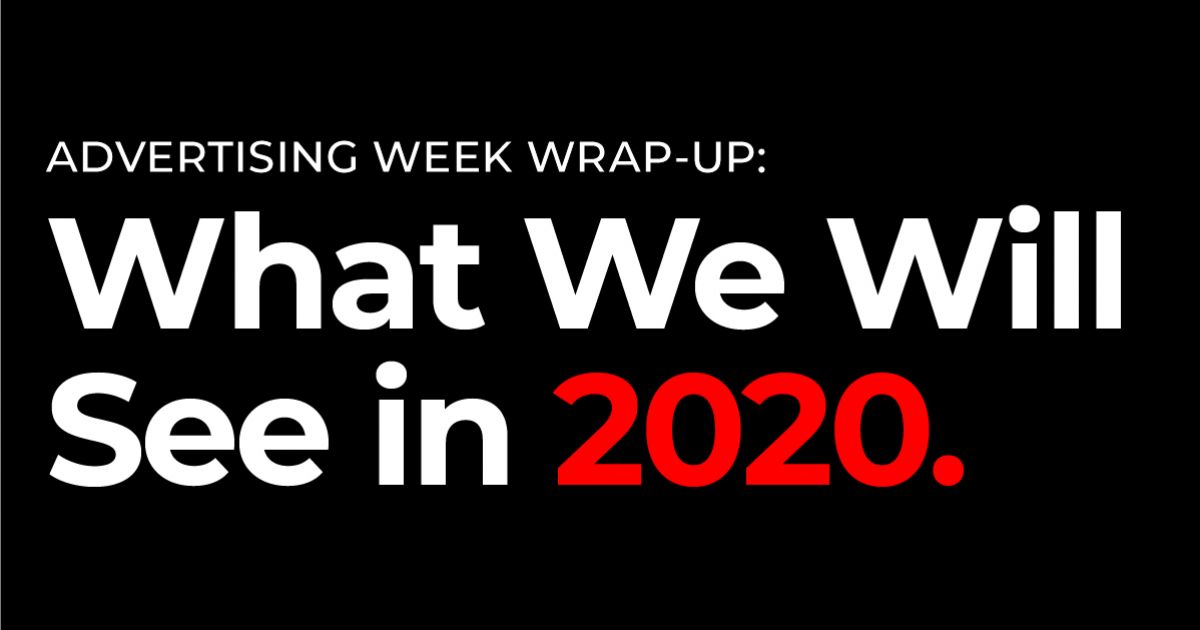During the month of September, I had the opportunity to attend Ad Week in New York on behalf of LMD. Speakers at the cutting edge of marketing innovation talked about various trends that we can expect to see in 2020—and how marketers can stay ahead of the curve and begin implementing now.
Trend #1: Even easier online shopping experiences
Groceries, couches, a $90,000 Mickey Mantle baseball card—you name it, you can probably buy it online (and get it shipped free). Therefore, it’s no surprise that brands are finding innovative ways to make online shopping even more convenient, such as:
- Social Commerce: Brands typically sell products on social media by providing a link to their website in a social post. With social commerce, brands can sell directly to consumers within native social media experiences—for example, consumers can browse and compare products on Facebook and then make the purchase on Facebook or Instagram vs. going to the company’s website. This creates a seamless brand experience for the consumer.
- Augmented & Virtual Reality (AR & VR): Many companies are eliminating consumers’ hesitation to buy through AR and VR experiences that allow users to “try before they buy.” For example, Wayfair’s augmented reality shopping app lets customers view products at an accurate scale in their own homes. Other brands that are successfully using AR and VR to appeal to consumers include TOMS and National Geographic.
Trend #2: The rise of YouTube influencers
Many marketers gravitate to Instagram to find influencers for their brands—for good reason. Brands love Instagram for influencer marketing because it’s “sticky” and effective at aligning the brand’s goals with those of the influencer, identifying the correct influencer to carry the brand’s message, and providing a return on investment for the brand.
However, when it comes to video content, Instagram falls behind. On Instagram, the default setting for video playback typically has audio muted—and it’s hard to promote a product if nobody is listening. Instagram also fails to drive conversions from the platform to the product or site being promoted.
More and more, marketers are turning to YouTube to leverage influencer marketing to drive audiences toward purchasing. Brands can easily track their ROI with YouTube’s urchin tracking module (UTM) code parameters. Each YouTube influencer campaign can be assigned a UTM code, which allows the brand to provide each individual influencer with a custom URL and track the number of clicks and conversions from the influencer’s YouTube video to the brand’s website. We predict we’ll see more brands moving toward YouTube influencer opportunities—just as the makeup and tech industries have already done.
Trend #3: Brands shaping culture
Culture—relationships, ideas, fashion, technology—is what people care out. From culture come fads and trends. Brands can influence trends simply by listening to what customers are saying—after all, many consumer purchase decisions are based on a brand’s cultural relevance.
One brand that’s harnessing the power of culture is Mastercard. The credit card giant has long made inclusivity part of its brand. Recently, Mastercard introduced a debit and credit card that lets transgender cardholders select whatever name they want to appear on their card as long as the issuing bank agrees. This allows transgender people to use the name they prefer, helps streamline the name-changing process for the transgender community, and makes using the card for purchases easier for both the cardholder and the merchant.
I’m excited to see how these trends will unfold over the next year. Want to implement some of these trends into your next campaign? Get in touch!
